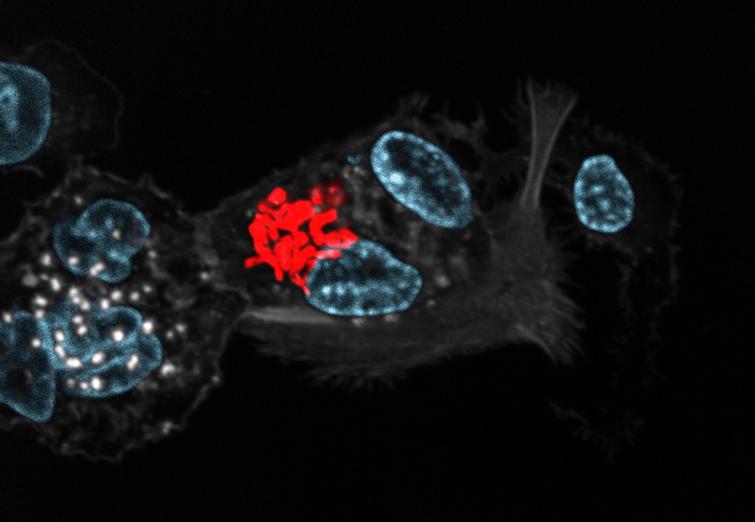
 News
News
How does Legionella pneumophila, the bacterium causing legionellosis, use the host cell machinery to its own advantage?
In 2014 over 1,300 people in France contracted legionelloses and nearly 130 died. Recently, this infectious disease has particularly hit the US where it was diagnosed in 87 patients in Flint (Michigan), and Portugal where over 300 people were infected, and seven died. This emerging disease is caused by Legionella pneumophila, an environmental bacterium that can grow in hot water systems. Legionellapneumophila is an intracellular bacterium that has a very sophisticated system to exploit the host cell functions to its own advantage. During analysis of its genome sequence, the team from the Biology of Intracellular Bacteria Unit (Institut Pasteur/CNRS), headed by Carmen Buchrieser, identified genes coding for proteins that were predicted to be involved in the infection of human cells. These proteins resemble proteins of higher organisms (eukaryotes), including humans, and can modify the physiology of the infected host cells. They are thus potential virulence factors. In this study, published in the journal PNAS, the researchers show that one of these proteins is secreted in the human cell and helps to block the antibacterial response of the infected cells.